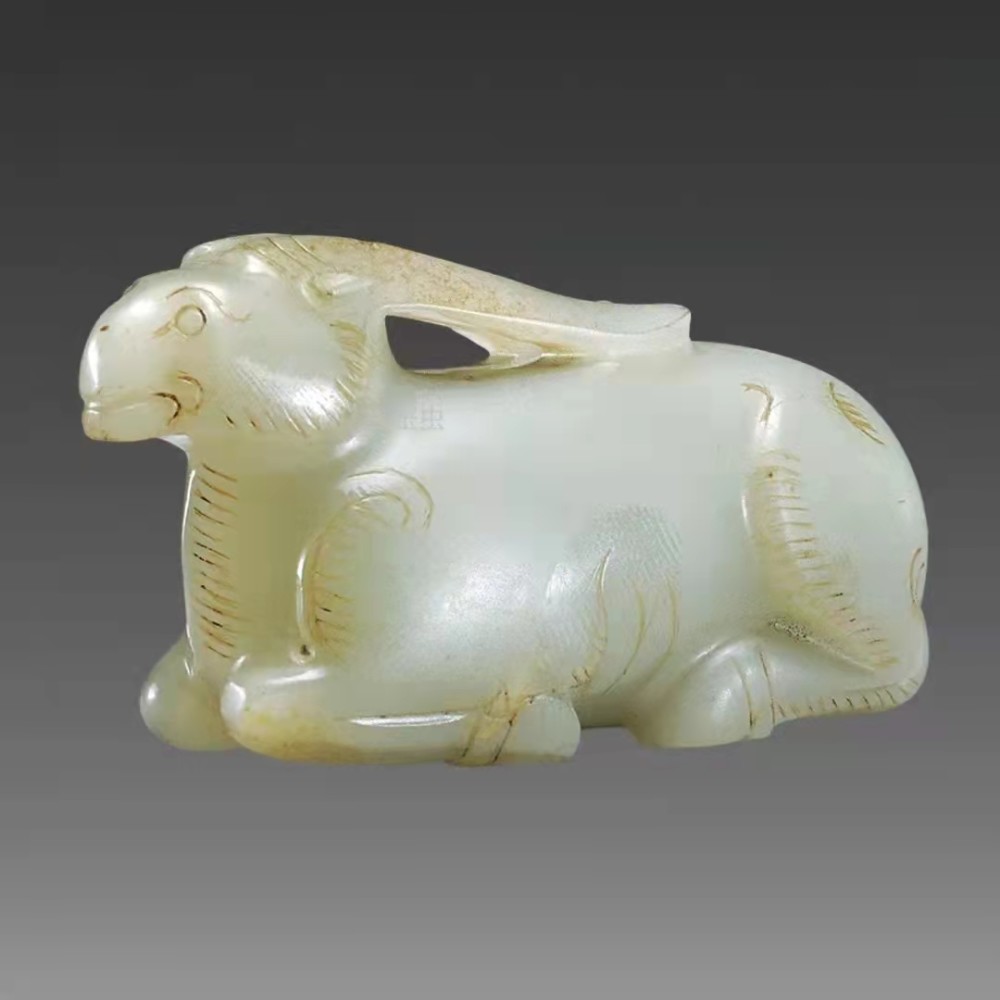China is known as the reputation of the country of jade, the ancients regarded jade as a treasure, ancient people loved jade in fact, not only like to use jade as an ornament, not only to express their external beauty, but also to express their own spiritual world and self-cultivation, in addition, jade also has the role of expressing human identity, emotion and demeanor.

Then, most of the gentlemen in the ancient times of the mainland chose to wear jade pendants, because they believed that jade could regulate morality, demand themselves, and restrict behavior and movements, so what role did jade actually have? First, it can ward off evil spirits and protect the body; second, it can protect the health and strengthen the body; third, it has a very high collection value, because as early as the Spring and Autumn Period and the Warring States Period, there were regulations on the use of Liurui. Come and learn about three ancient jade artifacts and explore their different beauty!
Four sections of dragon and phoenix jade
First of all, this first piece is from the jade in the tomb of Zeng Houyi, who has unearthed more than 15,000 cultural relics, in addition to the world's largest and heaviest symphony orchestra composed of bronze chimes, pianos, flutes, etc., so that it has left a strong impression on the history of world music. Today, these precious cultural relics are displayed in the Hubei Provincial Museum.
The above is a four-section dragon and phoenix jade made in the Warring States period, excavated in 1978 from the tomb of Marquis Yi of Zeng, and is now in the collection of Hubei Provincial Museum. This jade pendant is perfectly carved from a complete piece of Xinjiang Hotan white jade, and the craftsmanship is very exquisite and the artistry is also very high. There is no doubt that this is the best jade among the warring princes, because this four-section dragon and phoenix jade pendant has carved a total of seven three-dimensional patterns of coiled dragons, four phoenix birds and four snakes.
Then, its important feature is that it is carved by a piece of jade pendant into four sections that can be actively folded, and each of these four sections is carved with ornaments with different themes, with double dragon patterns, double phoenix patterns and dragon and phoenix integrated ornaments, which are very mythical and religious. These, the small dragons are intertwined with each other, showing a unique curved beauty and the exquisite beauty of craftsmanship, which is a classic in the jade of the Warring States period.
Blue and white jade skeleton dongsheng figure ring decoration
The second piece is a blue and white jade skeleton Dongsheng tu ring ornament from the tomb of King Liangzhuang in the Ming Dynasty. The tomb of King Liangzhuang is a joint burial tomb of kings and concubines, which is also very common in mainland history, and the burial items in the tomb are very rich, of which there are more than a thousand pieces of gold, silver and jade. This blue and white jade skeleton Dongsheng ring is about 5 centimeters in diameter, and the position of the two rabbits is not exactly the same, but the opposite. We know that rabbits were auspicious things in ancient times, so rabbits are very common animal shapes in jade.
The two rabbits, one large and one small, seemed to be hiding in the forest, and both rabbits looked up as if they were watching the full moon that appeared in the forest and the clouds that accompanied xiangrui. The two rabbits seemed to be quietly listening to the sounds of the night, as if they were also intoxicated and unable to extricate themselves. The carving technology of this jade is very superb, ingenious, the knife work is very meticulous and exquisite, and it also uses multi-layered through carving, which is very stylish.
White jade tiger head pattern belt
Finally, this jade is a Yuan Dynasty jade from a technical point of view, but artistically, it is biased towards Song Dynasty jade. Its pattern technique is not very different from that of other eras. Now the white jade tiger head belt pictured above is in the Collection of the National Museum. The jade in this jade is very white and delicate, generally square and blocky, its front is carved with a tiger pattern and depicts the tiger's face with a shaded line, and the lower part is created with a rectangular hole for hanging items.
Then the image of this tiger is very vivid, whether it is its eyes or mouth, it makes this tiger come to life. Its back is different from the front, the back is relatively smooth and elegant, there is no carving, and there are perforations in all four corners for perforation and fixation. So, why use a tiger motif? Because the tiger is very brave and powerful, symbolizing a very powerful force, expressing the ancients' praise for vitality and yearning for a better life, this may also be the reason why the ancients created the white jade tiger head with a bracelet.
This article comes from the original jewelry appraiser Yuanyuan, the picture comes from the network, if there is infringement, please contact us to delete, thank you!